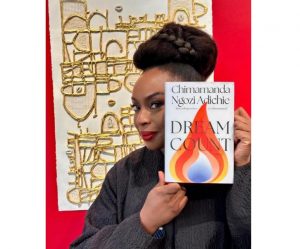Remember when Carrie Fisher debuted Princess Leia’s side buns?
Written by Jacqui PalumboDelving into the archives of pop culture history, “Remember When?” is a series offering a nostalgic look at the celebrity outfits that defined their eras.Since 1977, when “Star Wars: A New Hope” kicked off a now-$65-billion franchise, fans of all ages have tapped into Princess Leia Organa’s indomitable attitude by donning her saucer-like side buns. The hairstyle declares a sense of self-assuredness fitting of a Rebel Alliance agent. Worn by adults, it can be flirty or daring; on “Star Wars'” youngest fans, it can be cute and precocious. Leia herself became sci-fi’s most famous feminist icon — her look has lasted over four decades to become a mainstay of fandom, from casual Halloween-goers to serious cosplayers.As the leading woman in a male-centric film, 19-year-old Fisher was an instant hit. Daring, whip-smart, resilient, and often cheeky, Leia toppled expectations about what a princess could be. “George didn’t want a damsel in distress, didn’t want your stereotypical princess,” Fisher said of director George Lucas in 1977. “He wanted a fighter, he wanted someone who was independent.”When Leia is first introduced in “A New Hope,” she’s deceptively demure — a captive damsel in holographic form. Wearing a white dress that cloaks her hair, her projection sweetly cries “You’re my only hope” in a virtual message to the Jedi Master Obi-Wan Kenobi. But when her male counterparts Luke Skywalker and Han Solo mount a rescue mission in the Death Star stronghold of antagonist Darth Vader, Leia saves them from a laser stand-off. As the leading woman in a male-centric film, 19-year-old Fisher was an instant hit. Credit: Courtesy IMDb”This is some rescue,” she quips. “You came in here, but didn’t you have a plan for getting out?” Fisher may have only worn her signature side buns in the first film, but the silhouette became synonymous with the actress, and has been endlessly referenced in pop culture. In 2009, Liz Lemon of “30 Rock” dressed as the rebel princess to get out of jury duty. In the recent final season of “Silicon Valley,” Monica Hall sported the look to appeal to a team of nerdy engineers. Perhaps most famously, Rachel Greene of “Friends” attempted a highly sexy but ultimately non-canonical Leia outfit for Ross, erroneously combining the side buns with Fisher’s “slave Leia” look from 1983’s “Return of the Jedi.” (When Ross is stunned, she pouts: “Did I get the hair wrong?” Yes, but we’ll forgive her.)Fisher initially had reservations about her hairstyle, however, calling them “cinnamon buns” and a “hair-don’t.” She found them impractical — it took two hours for stylists to secure them — but Lucas had even wilder ambitions. Leia toppled expectations about what a princess could be. Credit: Courtesy IMDbIn the prequel trilogy, Natalie Portman as Queen Amidala becomes the guinea pig for all of Lucas’s hair dreams, with dramatic sculptural styles and intricate tresses seemingly influenced by every corner of the world, from East Asia to Africa to Renaissance Europe. By comparison, Daisy Ridley’s Rey in the final trilogy had it easy with her no-fuss triple bun.Lucas’s inspiration for Leia’s side buns surfaced in 2002, in an interview with Time. “I went with a kind of southwestern Pancho Villa-woman revolutionary look,” Lucas said. “The buns are basically from turn-of-the-century Mexico.” It was a puzzling reference, though, and journalists tried for years to fact-check his claim. Female Mexican revolutionaries of the era were not known for wearing a particular hairstyle; instead, it suggested he may have been looking at photos of the “squash blossom” style of the southwestern Native American Hopi tribe.







